I thought I should contribute to HBT in return for some great advise. Here's a more detailed description of my attempts to solder a stainless 1/2" coupling as part of a hopback. It's a practice run before I do it on a precious keg. It turned out really well and was super simple once I got it all together. My first run was a little sloppy but I figured it out on my second one.
Here's my first attempt. The solder was a bit sloppy I was not level and the solder pool ran so I did not have enough solder and I did not heat evenly enough.
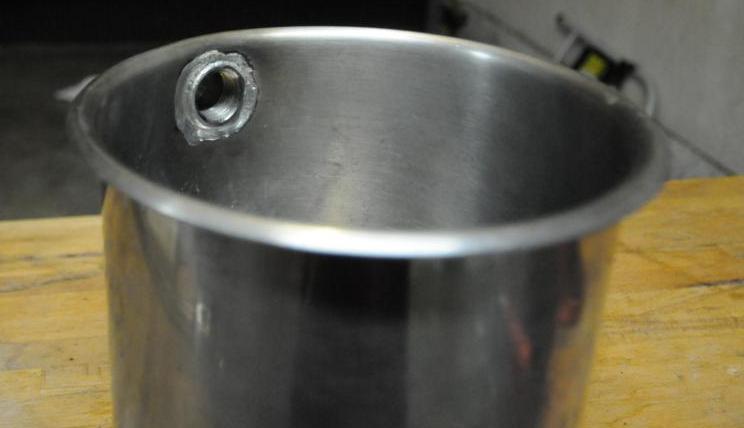
Step 1: Assemble your flare tool (This was inspired by the soldering stainless steel thread. They call it a keg tool)
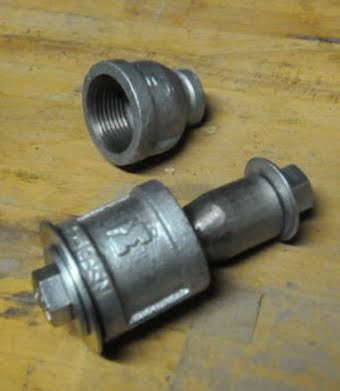
grind your mandrel out of a 1/2"x3/8" coupling. (Grind the 3/8" side) I used a bench grinder but I think holding the coupling on a vise and using an angle grinder should give fair results.
Parts:
1/2" x 4" full thread machine bolt
1" x 1/2" coupling or 1"x1" coupling
1/2" nut
various washers

Step 2: Drill your hole (make sure it's just barely large enough to fit your mandrel)
Step 3: Assemble flare tool.
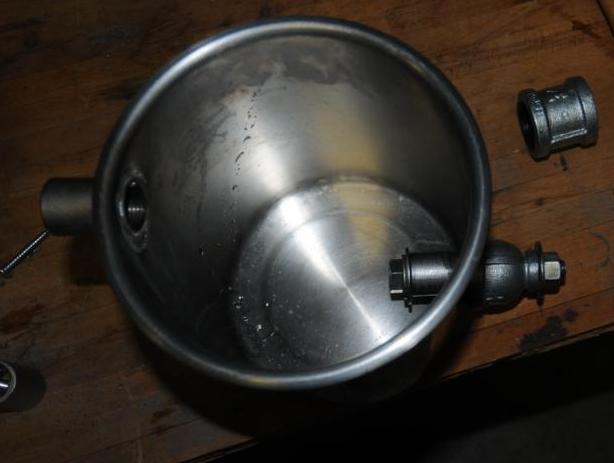
Step 4: drive mandrel into wall.
Step 5: Disassemble tool.
Step 6: remove mandrel with hammer (rubber or deadblow so you don't ruin anythink)
Step 7: Clean coupling and hole. Fit coupling into hole.
Step 8: Drive coupling into position (I want it flush with the interior.)
Step 9: Place onto a stable surface with the coupling pointed down and PLUMB. This is critical so the flux and solder pools stay in place.
Step 10: Apply flux. (You MUST use flux designed for stainless.)
I use stay clean. I got it from an air gas dealership.
Step 11: Bend a ring of solder using the coupling as a form and lay it on top
of the flux.
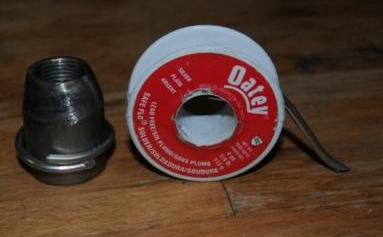
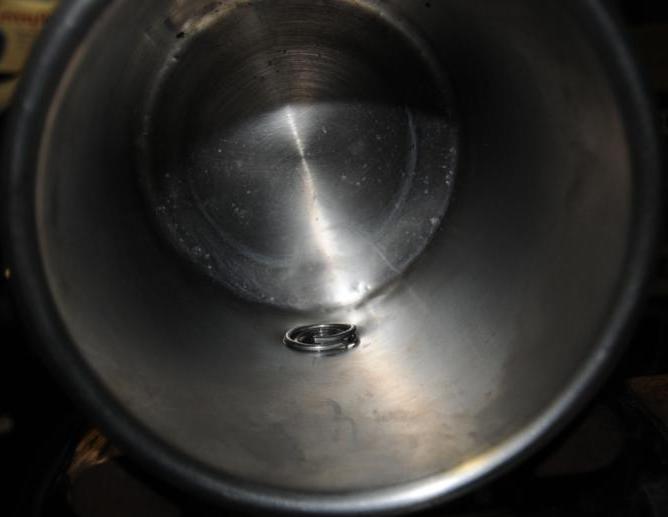
Step 12: Solder. Heat the coupling from the outside using a propane torch. Don't heat the thin metal. Heat until the solder flows and forms a nice pool around the entire coupling.
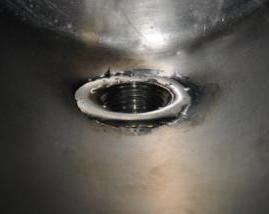
Step 13: Allow to air cool. Don't quench with water since this may weaken the joint.
Step 14: Clean! You must clean off the flux since it is a strong acid and will cause corrosion wherever it sits. Rinse with water and scrub off all the slag.
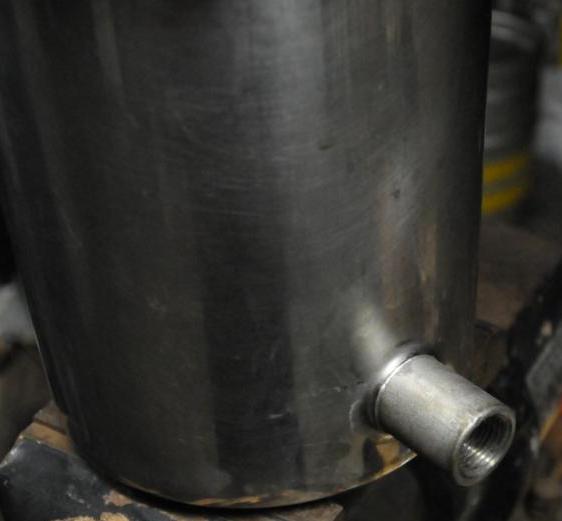
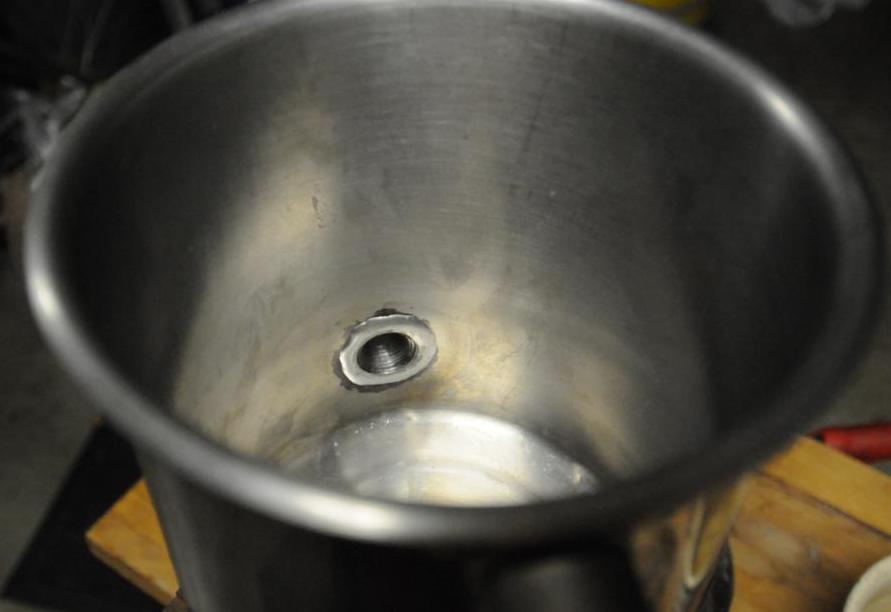
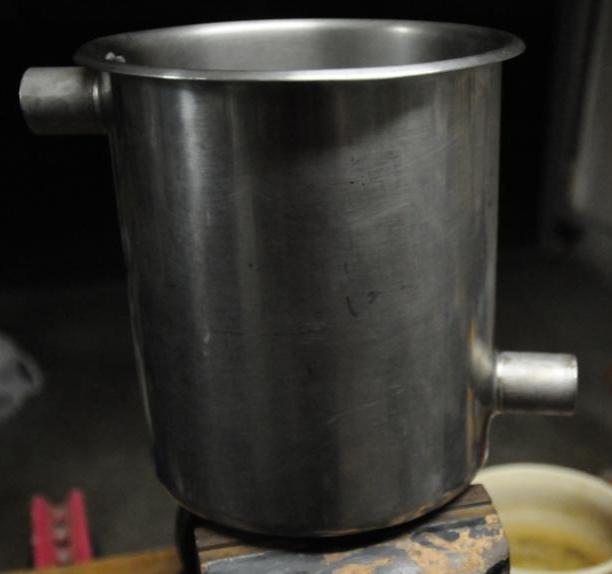
Hope this was useful. I plan on doing the same to my keg when I have time. I like this alternative to welding since it's so accessible to most average homebrewers. The equipment is cheap. The tool was ~$10 to build. You don't have to be particularly skilled to get things nice and smooth.
Charles
Here's my first attempt. The solder was a bit sloppy I was not level and the solder pool ran so I did not have enough solder and I did not heat evenly enough.

Step 1: Assemble your flare tool (This was inspired by the soldering stainless steel thread. They call it a keg tool)

grind your mandrel out of a 1/2"x3/8" coupling. (Grind the 3/8" side) I used a bench grinder but I think holding the coupling on a vise and using an angle grinder should give fair results.
Parts:
1/2" x 4" full thread machine bolt
1" x 1/2" coupling or 1"x1" coupling
1/2" nut
various washers

Step 2: Drill your hole (make sure it's just barely large enough to fit your mandrel)
Step 3: Assemble flare tool.

Step 4: drive mandrel into wall.
Step 5: Disassemble tool.
Step 6: remove mandrel with hammer (rubber or deadblow so you don't ruin anythink)
Step 7: Clean coupling and hole. Fit coupling into hole.
Step 8: Drive coupling into position (I want it flush with the interior.)
Step 9: Place onto a stable surface with the coupling pointed down and PLUMB. This is critical so the flux and solder pools stay in place.
Step 10: Apply flux. (You MUST use flux designed for stainless.)
I use stay clean. I got it from an air gas dealership.
Step 11: Bend a ring of solder using the coupling as a form and lay it on top
of the flux.


Step 12: Solder. Heat the coupling from the outside using a propane torch. Don't heat the thin metal. Heat until the solder flows and forms a nice pool around the entire coupling.

Step 13: Allow to air cool. Don't quench with water since this may weaken the joint.
Step 14: Clean! You must clean off the flux since it is a strong acid and will cause corrosion wherever it sits. Rinse with water and scrub off all the slag.



Hope this was useful. I plan on doing the same to my keg when I have time. I like this alternative to welding since it's so accessible to most average homebrewers. The equipment is cheap. The tool was ~$10 to build. You don't have to be particularly skilled to get things nice and smooth.
Charles


